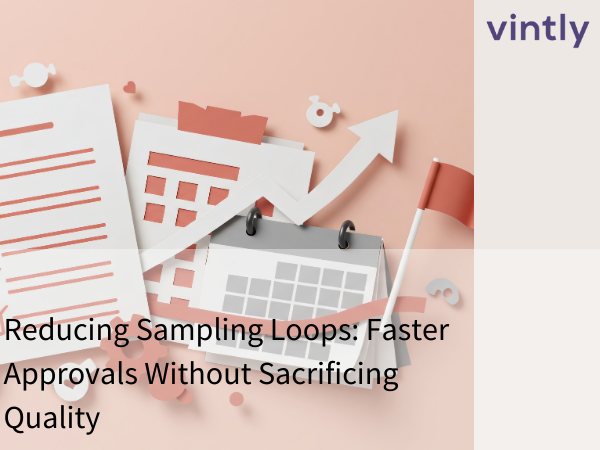Maintaining a robust and efficient supply chain is crucial to maintain business success and growth.. One of the most effective ways to ensure this is through implementing supplier development programs. These initiatives focus on enhancing the capabilities and performance of suppliers, leading to mutual growth and competitive advantage. This article explores how supplier development programs can significantly improve performance, incorporating essential elements such as vendor training, capacity building, and supplier education.
Understanding Supplier Development
Supplier development refers to the efforts made by companies to improve their suppliers' capabilities and performance. This involves various strategies, including training, education, and collaborative projects, aimed at enhancing the overall efficiency and reliability of the supply chain. Development programs are designed to build long-term, mutually beneficial relationships between companies and their suppliers.
The Importance of Supplier Development Programs
Implementing supplier development programs offers several critical benefits:
1. Performance Improvement
Supplier development programs are directly linked to performance improvement. By providing targeted training and resources, companies can help their suppliers enhance quality, reduce costs, and improve delivery times. This leads to a more efficient and reliable supply chain, which is essential for maintaining competitiveness in the market.
2. Capacity Building
Capacity building is a key component of supplier development. It involves enhancing the supplier's ability to meet increasing demands and adapt to changing market conditions. Through capacity building initiatives, suppliers can scale their operations, invest in new technologies, and optimize their processes, ensuring they can support their clients' growth and strategic objectives.
3. Risk Mitigation
A well-developed supplier base is more resilient and less prone to disruptions. Development programs help suppliers improve their risk management practices, ensuring continuity of supply even in adverse conditions. This reduces the overall risk for the company and ensures a stable supply chain.
4. Innovation and Collaboration
Supplier development fosters a collaborative environment where innovation can thrive. By working closely with suppliers, companies can drive joint innovation projects, leading to new products, services, and process improvements. This collaborative approach also strengthens the relationship between the company and its suppliers, leading to long-term strategic partnerships.
Key Elements of Effective Supplier Development Programs
To maximize the benefits of supplier development, programs should incorporate several key elements:
1. Vendor Training
Vendor training is crucial for enhancing supplier capabilities. Training programs can cover a wide range of topics, from quality management and lean manufacturing principles to advanced technologies and sustainability practices. By investing in vendor training, companies ensure their suppliers have the necessary skills and knowledge to meet high standards and drive performance improvement.
2. Supplier Education
Supplier education goes beyond basic training, providing in-depth knowledge and expertise. This can include workshops, seminars, and online courses designed to educate suppliers on industry best practices, regulatory requirements, and emerging trends. Supplier education programs help suppliers stay ahead of the curve and continuously improve their operations.
3. Capacity Building Initiatives
Capacity building initiatives focus on enhancing the supplier's ability to scale and adapt. This can involve investments in new equipment, process optimization, and infrastructure development. By supporting these initiatives, companies can ensure their suppliers are well-equipped to meet growing demands and maintain high performance levels.
4. Continuous Improvement Programs
Continuous improvement is a fundamental principle of supplier development. Programs should include regular performance assessments, feedback loops, and collaborative improvement projects. This ongoing effort to identify and address areas for improvement ensures that suppliers are constantly evolving and enhancing their performance.
Case Studies: Successful Supplier Development Programs
1. Toyota’s Supplier Development Program
Toyota is renowned for its effective supplier development program. The company works closely with its suppliers through the Toyota Production System (TPS), providing training and support to enhance quality and efficiency. This collaborative approach has led to significant performance improvements, reduced costs, and increased innovation across Toyota's supply chain.
2. Procter & Gamble’s Supplier Collaboration
Procter & Gamble (P&G) has a robust supplier development program that focuses on capacity building and innovation. P&G collaborates with its suppliers through joint business planning and continuous improvement initiatives. This has resulted in improved supplier performance, reduced supply chain risks, and the development of innovative products and processes.
Supplier development programs are a powerful tool for enhancing performance and building a robust supply chain. By focusing on vendor training, capacity building, and supplier education, companies can drive significant improvements in quality, efficiency, and innovation. These programs not only benefit the suppliers but also create a competitive advantage for the companies that invest in them. Embracing supplier development is essential for businesses looking to thrive in today’s dynamic market environment.
Implementing effective supplier development programs will ensure your business remains competitive, resilient, and capable of sustaining long-term growth. By fostering strong, collaborative relationships with your suppliers, you can drive mutual success and achieve unparalleled performance improvement.
.png)


